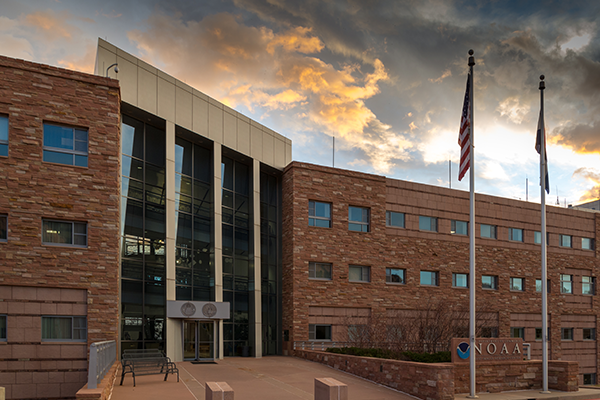
Variability in AMOC strength modifies the Northern Hemisphere surface temperature response in the CESM Large Ensemble
Elizabeth A. Maroon
CIRES
Thursday, Jul 20, 2017, 3:00 pm
DSRC Room 1D403
Abstract
AMOC strength is projected to decrease due to anthropogenic warming, with many potential ramifications for the climate system. Here, we explore the influence of AMOC strength variability on Northern Hemisphere surface temperature. We use historical and future forcing simulations from the CESM Large Ensemble, which allows the robust discrimination between the forced climate response and internal climate variability. Consistent with previous modeling of future climate, the ensemble mean AMOC strength weakens while the ensemble mean surface temperature increases. Going beyond the ensemble mean, we look at the variability in the surface temperature response that can be attributed to variability in AMOC strength. We find that ensemble members with a weaker AMOC response have a larger increase in extratropical Northern Hemisphere temperature. An AMOC that strengthens by 0.5 Sverdrups more than the ensemble mean is associated with 0.20K and 0.13K higher extratropical Northern Hemisphere temperature in the historical and future ensembles, respectively. This variability in extratropical surface temperature is equivalent to 54% and 2% of the forced temperature response in these two scenarios. In some locations of the North Atlantic, the magnitude of the surface temperature response attributed to variability in AMOC strength is greater than 30% of the forced future temperature response. Variability in the strength of midlatitude westerlies across the North Atlantic and Eurasia is associated with this AMOC variability. This intriguing result suggests that both the AMOC variability and the downstream Eurasian temperature response may be controlled by atmospheric internal variability. We are examining the lead-lag relationships between the North Atlantic winds, surface heat flux, AMOC strength, and downstream temperature response, which may elucidate if the temperature response to the AMOC is caused by atmosphere variability, ocean variability, or both.
You must provide an accepted form of identification at the Visitor Center to obtain a vistor badge. Security personnel also inspect vehicles prior to entrance of the site. Please allow extra time for these procedures.
After receiving a badge, you must arrive at the DSRC Lobby at least 5 minutes before the seminar starts to meet your security escort. If you arrive after that time, you will not be allowed entry.
Foreign Nationals: Please email the seminar contact at least 48 hours prior to the seminar to provide additional information required for security purposes.
Seminar Contact: robbie.desen@noaa.gov